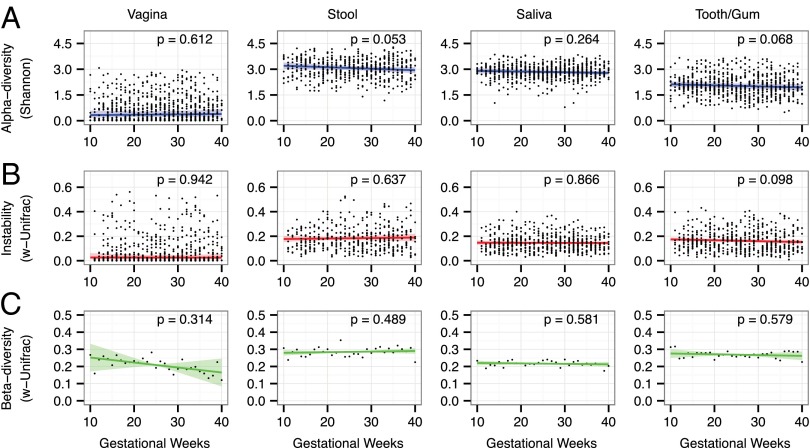Fig. 1.
Human-associated bacterial communities are stable during pregnancy. Based on the data from the first group of 40 women, the estimated trends of alpha diversity, weekly instability (week-to-week variation within subjects), and beta diversity with gestational time are insignificant (P > 0.05) at all body sites. (A) Shannon diversity is plotted against gestational time for specimens taken from the vagina, stool, saliva, and tooth/gum. Blue lines indicate the linear mixed-effects regression of diversity on time with grouping by subject. Shading indicates the 95% confidence interval (CI). Because vaginal diversity and stability data were highly skewed, they were log-transformed before fitting to improve normality. (B) Weighted-UniFrac distance between same-subject samples taken 1 wk apart is plotted against gestational time. Red lines indicate the lme regression, and the shaded area indicates the 95% CI. (C) Average weighted-UniFrac distance between different-subject samples taken within the same gestational week is plotted against gestational time. The green lines indicate the linear fit, and the shading indicates the 95% CI as estimated by a permutation bootstrap (SI Appendix, SI Methods).

